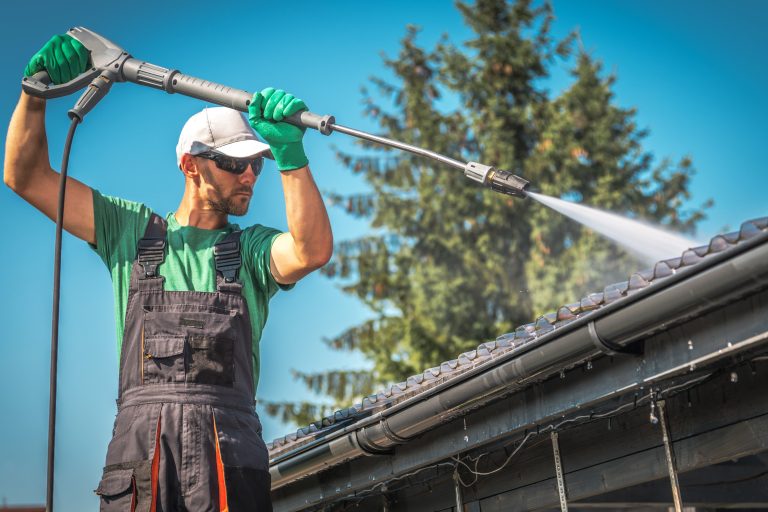
The Ultimate Guide to Roof Cleaning and Power Washing in Chicago
Your home’s roof takes a beating—especially in a city like Chicago, where the weather is anything but predictable. From harsh winters with heavy snow to humid summers that invite moss and algae growth, your roof is constantly exposed to the elements. Over time, all that dirt, grime, and organic buildup don’t just make your home look neglected—they can actually shorten the lifespan of your roof and lead to costly repairs.
That’s where roof cleaning and power washing come in. Keeping your roof clean isn’t just about curb appeal (although a spotless roof certainly boosts your home’s aesthetic); it’s about protecting your investment and ensuring your home stays in top condition for years to come. But here’s the catch—not all cleaning methods are created equal. Many homeowners assume power washing is the way to go for everything, but when it comes to your roof, soft washing is often the safest and most effective method.
In this guide, we’ll walk you through everything you need to know about roof cleaning and power washing in Chicago—including when to DIY, when to call in the pros, and how to choose the best cleaning method for your home. Whether you’re dealing with black streaks, stubborn moss, or just years of built-up dirt, you’ll find the best solutions right here. Let’s get started!
Why Roof Cleaning in Chicago is Essential
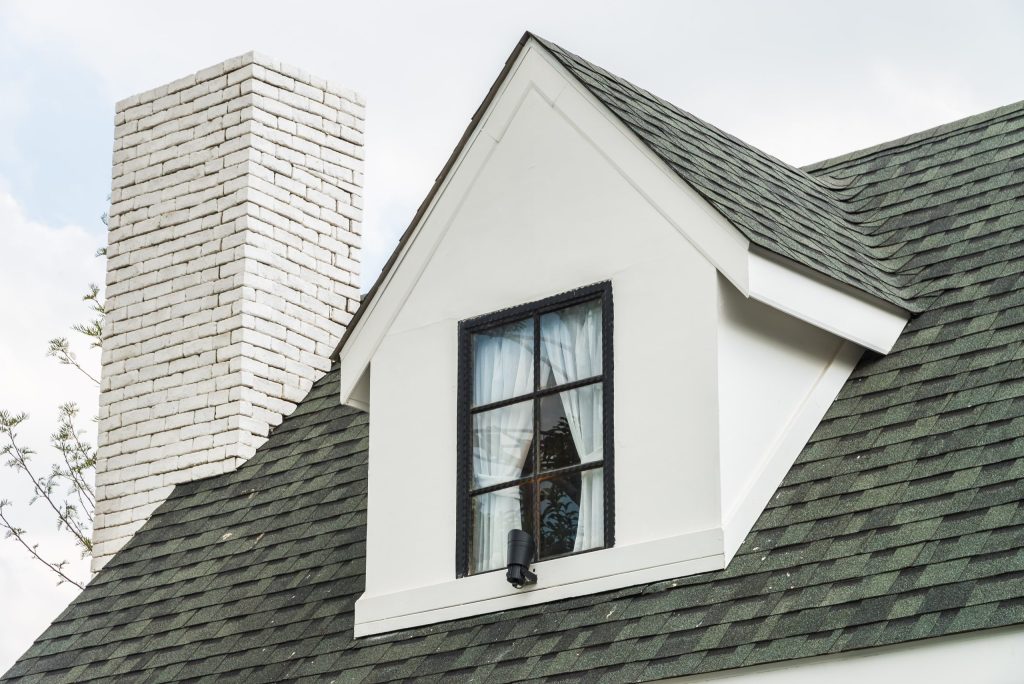
Your roof isn’t just a protective shield for your home—it’s an investment. But in a city like Chicago, where extreme weather is the norm, your roof faces a constant battle against the elements. Without regular roof cleaning, dirt, moss, and algae can build up, leading to expensive repairs and a shortened lifespan for your roof.
How Chicago’s Weather Affects Your Roof
Chicago’s harsh winters, rainy springs, humid summers, and windy falls all contribute to roof wear and tear:
- Snow & Ice: Trapped moisture can seep under shingles, causing leaks and structural damage.
- Rain & Humidity: Ideal conditions for moss, algae, and mold growth, which can weaken your roof.
- Summer Heat: UV rays can dry out and crack shingles, reducing energy efficiency.
- Leaves & Debris: Clogged gutters can lead to water damage and mold buildup.
Why Ignoring Roof Cleaning is a Costly Mistake
A neglected roof isn’t just an eyesore—it can cause serious problems:
- Algae and moss feed on roofing materials, leading to deterioration.
- Trapped heat from dirt buildup increases energy costs.
- Moisture damage can cause expensive leaks and structural issues.
The Power of Soft Washing for Roof Cleaning
Unlike high-pressure power washing, which can damage shingles, soft washing uses a gentle, low-pressure system with specialized cleaning solutions. It effectively removes dirt, kills mold at its root, and keeps your roof clean longer—without the risk of damage.
Keeping up with roof cleaning in Chicago isn’t just about appearances—it’s essential for protecting your home. Up next, we’ll explore the best cleaning methods to keep your roof in top shape!
What is the Best Roof Cleaning Method? (Soft Washing vs. Power Washing)
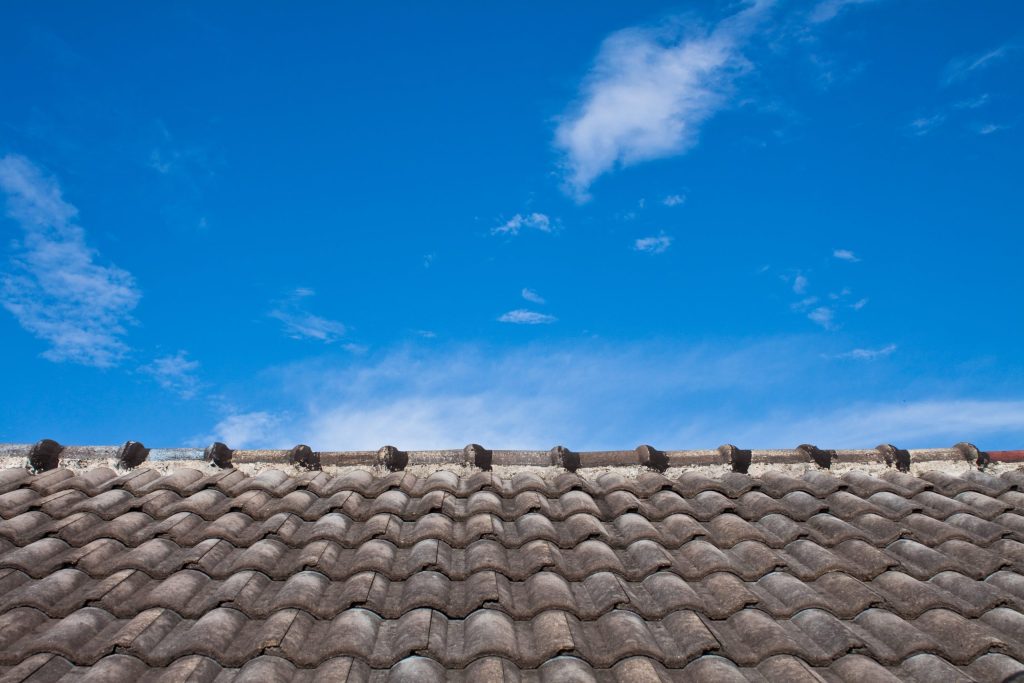
When it comes to cleaning your roof, not all methods are created equal. Many homeowners assume that power washing is the best way to remove dirt and grime, but that’s not always the case—especially for roofs. While power washing is great for driveways and sidewalks, using high-pressure water on shingles can do more harm than good. That’s where soft washing comes in, offering a safer and more effective solution for roof cleaning in Chicago.
Soft washing is a low-pressure cleaning technique that uses a specially formulated cleaning solution to break down dirt, algae, and moss without damaging your roof. Instead of blasting away grime with force, it allows the solution to do the work, gently removing buildup while preserving the integrity of your shingles. This method is particularly useful for asphalt shingle roofs, where high-pressure water can strip away protective granules, leaving the surface vulnerable to weather damage.
Power washing, on the other hand, is a high-pressure cleaning method designed for hard surfaces like concrete, brick, and stone. It’s highly effective at removing tough stains, but when used on a roof, it can force water under shingles, leading to leaks and moisture damage. The pressure can also loosen or break shingles, reducing the lifespan of your roof rather than extending it.
For homeowners in Chicago, soft washing is the preferred choice for maintaining a clean, long-lasting roof. It not only removes harmful organic growth but also helps prevent it from returning. The cleaning solution used in soft washing kills algae and moss at the root, ensuring that your roof stays cleaner for longer. Power washing still has its place, but it’s best reserved for other areas of your home’s exterior, such as driveways, decks, and siding.
Understanding the difference between these two methods can save you from costly roof damage. Choosing the right approach ensures that your home remains protected while maintaining its curb appeal.
DIY vs. Professional Roof Cleaning: What’s Best for Your Home?
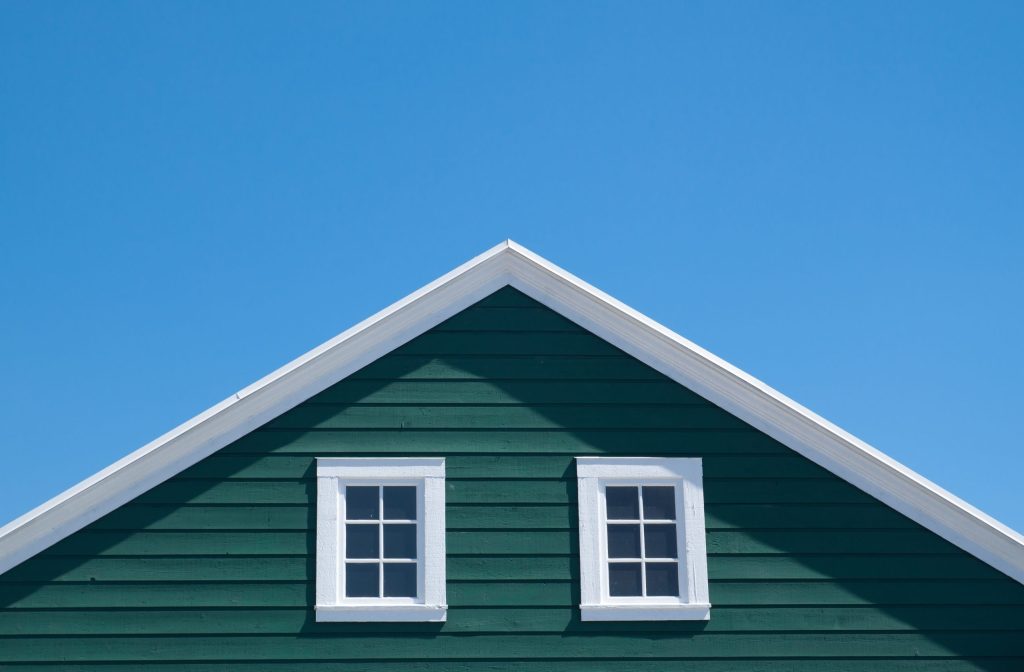
When it comes to roof cleaning in Chicago, homeowners often debate whether to tackle the job themselves or hire a professional. While a DIY approach may seem like a cost-saving solution, it comes with significant risks, from potential injuries to accidental roof damage. On the other hand, professional roof cleaning ensures a thorough, safe, and long-lasting result.
DIY Roof Cleaning: Is It Worth the Risk?
Many homeowners consider cleaning their roofs themselves to save money, but this can be more challenging than expected. Some of the biggest drawbacks of DIY roof cleaning include:
- Safety Hazards: Climbing onto a roof without proper safety equipment increases the risk of falls, especially when the surface is wet or covered in moss.
- Improper Cleaning Methods: Power washing may seem like a quick fix, but the high pressure can strip away protective layers on shingles, leading to leaks and premature aging.
- Lack of Effective Cleaning Solutions: Store-bought roof cleaners may not be strong enough to kill mold, algae, and moss at the root, leading to rapid regrowth.
- Time and Effort: Roof cleaning is a labor-intensive task that can take several hours, especially without professional equipment.
Why Hiring a Professional is the Better Choice
Professionals use soft washing, a low-pressure cleaning technique that removes dirt and algae without damaging shingles. Here’s why hiring an expert is a smarter investment:
- Proper Equipment: Professionals use commercial-grade soft washing systems and eco-friendly cleaning solutions to ensure a deep clean without harming the roof.
- Long-Lasting Results: The cleaning agents used in professional soft washing kill bacteria and algae at the root, preventing regrowth for longer-lasting cleanliness.
- Comprehensive Inspection: Trained roof cleaners can spot early signs of damage, helping homeowners address small issues before they become costly repairs.
- Time-Saving and Convenient: A professional crew can clean a roof in a few hours, sparing homeowners the hassle and risk.
For most homeowners, professional roof cleaning in Chicago is the safest and most effective choice. Up next, we’ll walk through the step-by-step process of professional roof cleaning so you know exactly what to expect.
The Roof Cleaning Process: Step-by-Step Guide
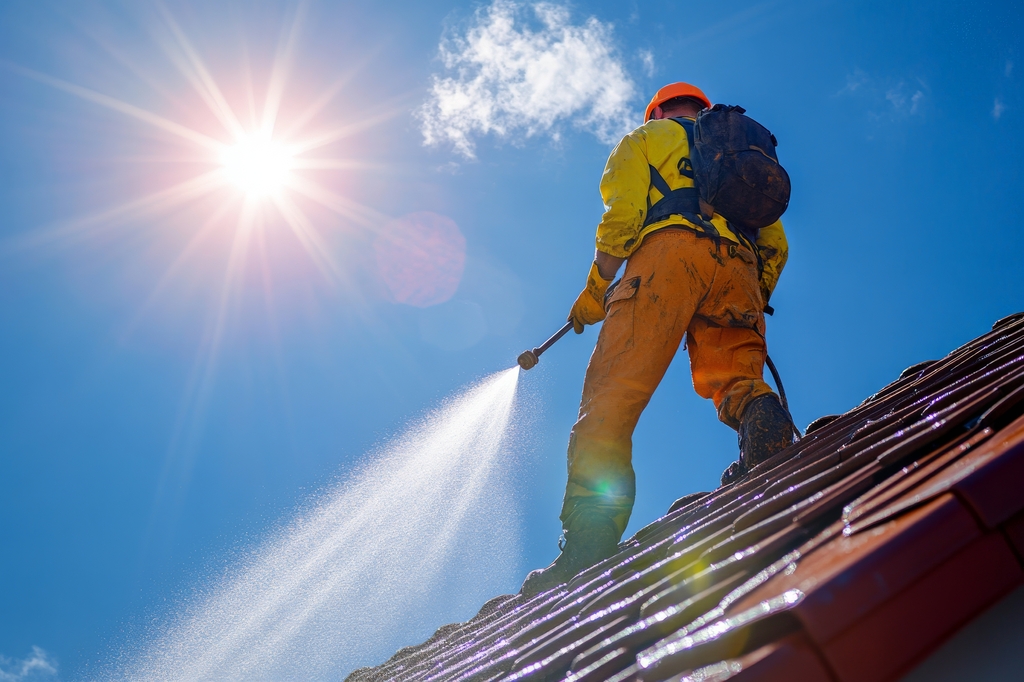
Understanding how roof cleaning in Chicago works can help homeowners make informed decisions about maintaining their roofs. Whether you’re hiring professionals or considering a DIY approach, following the correct process ensures a thorough clean without causing damage.
Step 1: Roof Inspection
Before any cleaning begins, a thorough inspection is essential. Professionals check for signs of moss, algae, and lichen growth, as well as damaged or loose shingles. Identifying problem areas helps determine the best cleaning method and prevents further damage during the process.
Step 2: Preparing the Area
To protect landscaping and nearby surfaces, professionals cover plants and windows before applying any cleaning solutions. Gutters are also checked to ensure they are clear and capable of draining any runoff from the cleaning process.
Step 3: Soft Washing Application
Instead of high-pressure power washing, which can damage shingles, soft washing is used. A specialized low-pressure sprayer applies a biodegradable cleaning solution that breaks down dirt, mold, and algae. This method ensures an even clean while preserving the integrity of the roofing material.
Step 4: Rinsing and Final Inspection
After the solution has had time to work, the roof is gently rinsed to remove any remaining debris. A final inspection ensures that all problem areas have been addressed and that the roof is left spotless.
With the right cleaning approach, homeowners can extend the life of their roofs and maintain curb appeal. In the next section, we’ll explore how power washing is beneficial for other parts of your home’s exterior.
Also read: Methods for Gutters to Be Cleaned Safely and Easily
Power Washing Chicago: Other Essential Areas to Clean

While roof cleaning in Chicago requires a gentle touch with soft washing, other parts of your home’s exterior can benefit from power washing. Over time, dirt, grime, mold, and algae build up on surfaces, making them look dull and neglected. Power washing is a fast and effective way to restore the beauty of your home and protect its structural integrity.
One of the most common areas for power washing in Chicago is the driveway. Constant exposure to car oil, dirt, and weather elements can cause unsightly stains that are difficult to remove with regular cleaning. A high-pressure wash can break down stubborn grime, leaving the surface looking fresh and well-maintained. Walkways and sidewalks also collect dirt, mold, and even algae, which can make them slippery and unsafe. A proper power wash not only improves appearance but also enhances safety by preventing slip hazards.
Decks and patios, especially those made of wood or composite materials, also benefit from power washing. Chicago’s fluctuating weather causes dirt and mildew to accumulate, leading to discoloration and potential damage. Power washing removes these contaminants, preparing the surface for sealing or staining to protect it from future wear. Fences, siding, and brick walls can also develop mold and grime, which diminishes curb appeal. Power washing these areas revitalizes the exterior, making the home look well-maintained.
Keeping your home’s exterior clean goes beyond aesthetics—it helps prevent long-term damage and extends the lifespan of outdoor surfaces.
Choosing the Best Roof Cleaning and Power Washing Service in Chicago
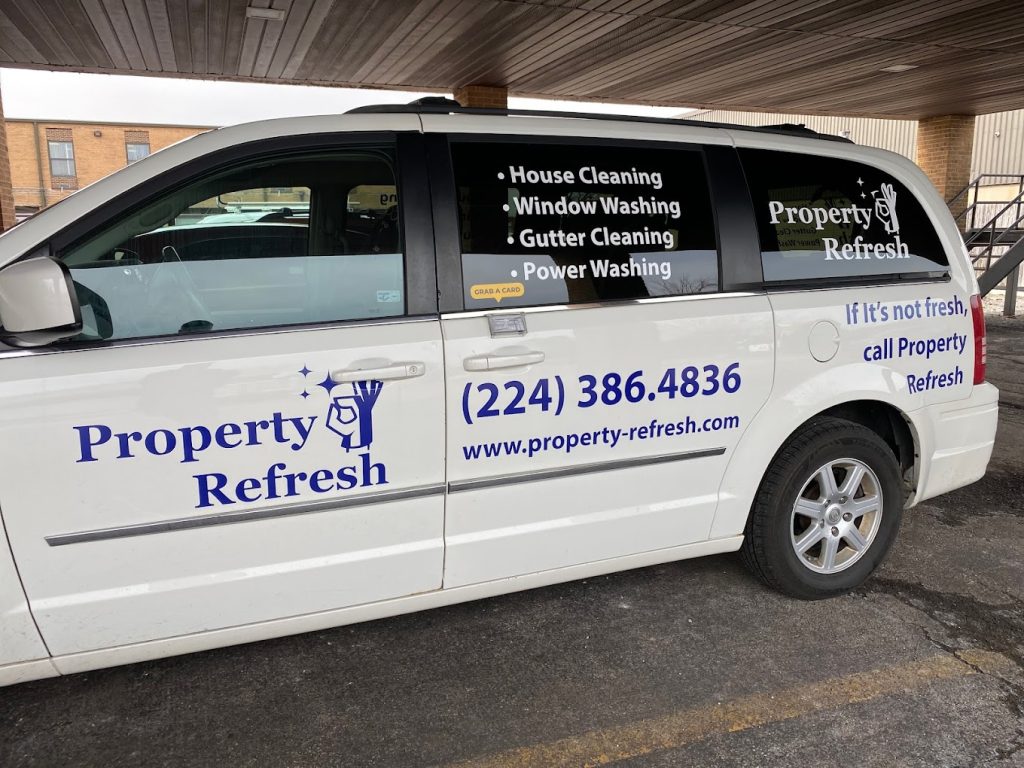
Selecting the right company for roof cleaning in Chicago is essential for protecting your home and ensuring the job is done correctly. With so many service providers available, knowing what to look for can help homeowners avoid poor-quality work, unnecessary damage, and hidden costs.
Experience should be a top priority when choosing a roof cleaning or power washing Chicago service. Companies that specialize in soft washing for roofs understand how to safely remove dirt, moss, and algae without harming shingles. If a provider suggests using high-pressure washing on a shingle roof, that’s a sign to look elsewhere. Soft washing is the safest and most effective method for roof cleaning, ensuring long-lasting results without causing damage.
Insurance and licensing are also critical. A reputable company should be fully insured to protect both homeowners and workers. Without proper coverage, homeowners could be held responsible for any accidents or property damage that occurs during the cleaning process. Checking for certifications, customer reviews, and industry training can also provide confidence in a company’s reliability.
While pricing is important, the cheapest option isn’t always the best. Some companies offer extremely low prices but use inferior cleaning solutions or rush through the job. Instead, look for a provider that offers transparent pricing and a guarantee of quality work.
Hiring a professional for roof cleaning in Chicago ensures a safe and thorough job that maintains curb appeal and extends the life of your roof. In the next section, we’ll wrap up with key takeaways and final recommendations.

